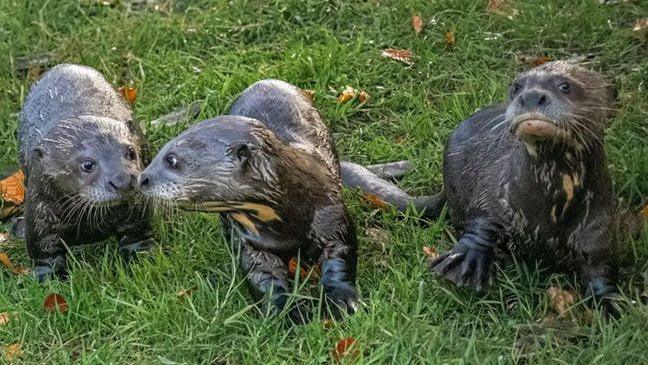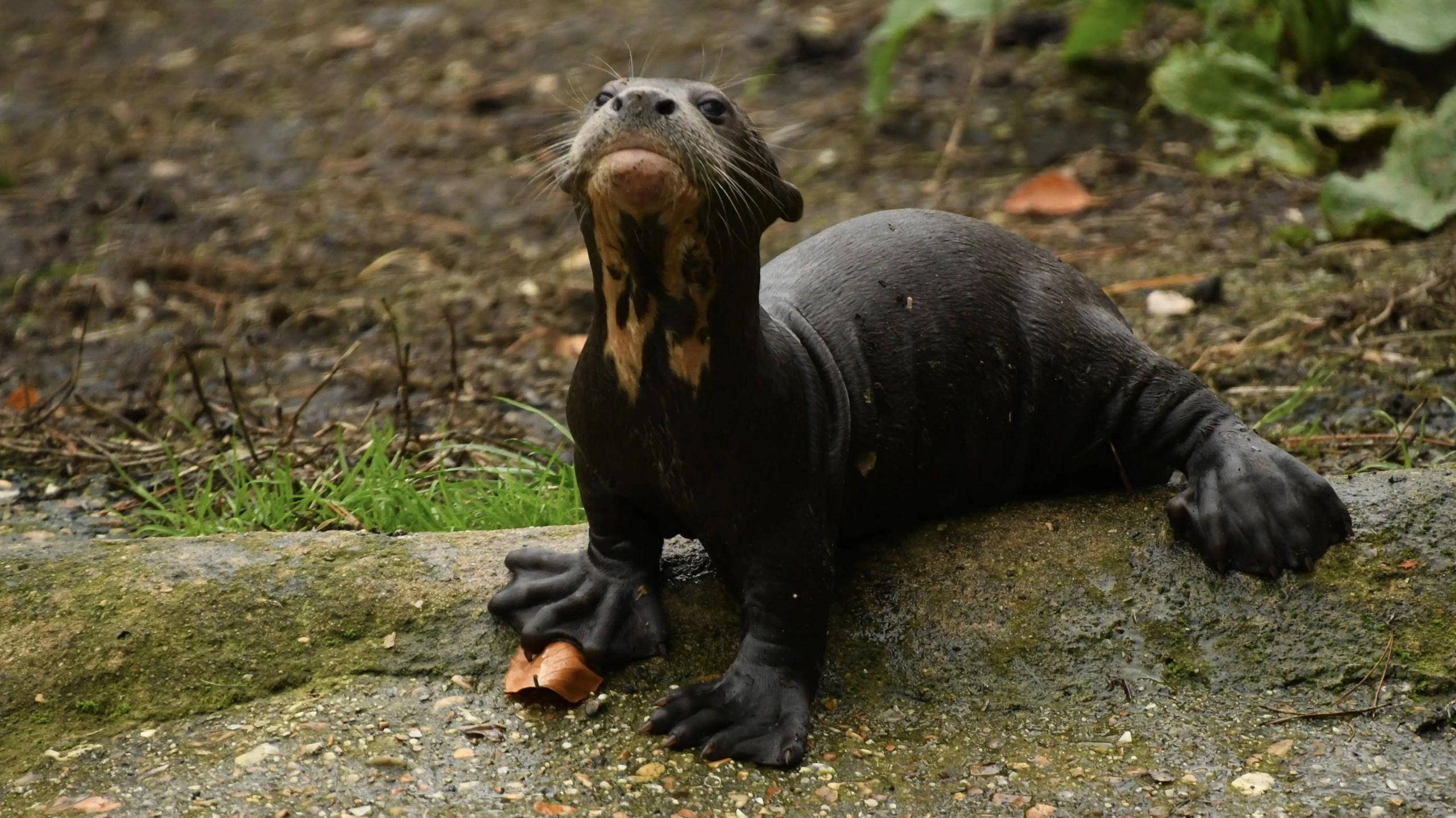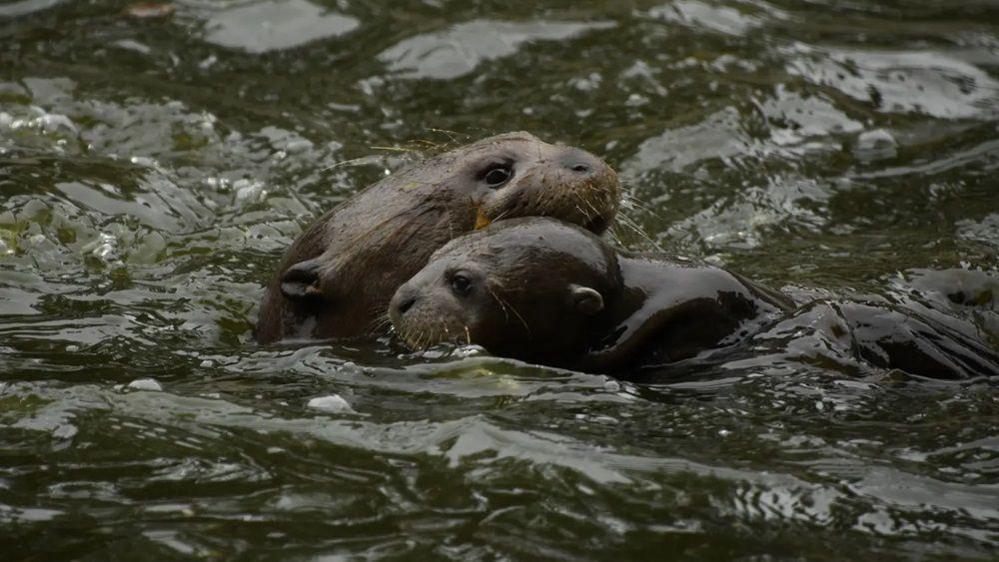New giant otter cubs help to boost numbers

The three giant otter cubs are very playful
- Published
Three giant otter cubs born in the UK have helped to increase numbers of the endangered species.
New Forest Wildlife Park, based in Hampshire, said the babies had brought their total of giant otters to 21 - which is more than half of the population in captivity in the UK.
The cubs were born on 2 August to mum, Ibera, and dad, Simuni, and passed their health check on 1 October.
The wildlife park said the cubs "marked another milestone in the fight to save a species teetering on the brink in the wild".
- Published1 May 2024
- Published24 July 2022
- Published19 February 2024

Otter throat markings are as unique as human fingerprints
One of the male cubs has been nicknamed "mini Simuni" after his light-coloured throat patch, which is similar to his father's.
At the age of 15, Simuni is believed to be the oldest giant otter in Europe to become a dad again.
"It's fascinating to watch Simuni bring out this little one who looks just like him," said their keeper Elizabeth McNamara.
"The throat patches on giant otters are like fingerprints where they are completely unique to each individual, so seeing such a strong resemblance between father and son is quite special."
The cubs' keepers say they are very playful during the day, particularly after feeding times when the adult otters bring them out to explore and play.

The keepers say the cubs enjoy swimming and playing
In the wild, giant otters can be found in the Amazon basin in South America, and face threats from habitat destruction, illegal hunting and pollution.
Jason Palmer, curator of collections at the wildlife park, said that taking care of the world's largest collection of captive giant otters was a responsibility they took seriously:
"They are disappearing from their native Amazon habitat at an alarming rate, and what we're achieving here in the New Forest all aids the species' future.
"Watching the new cubs learning to swim alongside their siblings isn't just a nice thing to see; it's a testament to what dedicated conservation can achieve."
